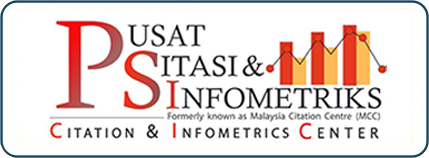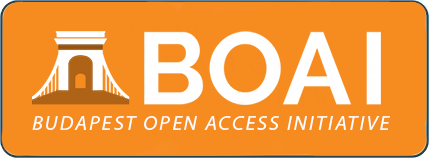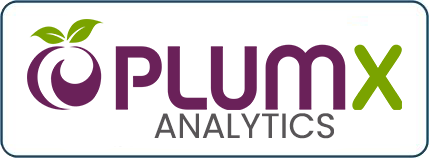Transforming Halal Training Through Gamification and Immersive Technology to Empower Talents
DOI:
https://doi.org/10.33102/jmifr.562Keywords:
Augmented Reality, Gamified Training, Experiential Learning, Immersive Learning, Halal IndustryAbstract
With a 4-year Compound Annual Growth Rate (CAGR) of 7.5%, the Halal economy is estimated to reach US$2.8 trillion by 2025. To obtain and retain Halal certification, businesses must guarantee that their workers are knowledgeable and skilled. Implementing Halal-toyyiban in businesses can be complex, especially when the manufacturing entities are owned and managed by non-Muslims. Therefore, developing a Halal training programme is crucial. The main challenge is ensuring that trainees can retain and recall what they have learned, ultimately changing their work culture and mindset. To address this challenge, corporate Halal training programmes must include built-in learning retention elements, such as gamification through games. Gamification can enhance employee engagement and safety awareness, reduce training costs, and lower learning curves. Moreover, recent technological advancements in Augmented Reality (AR), Mixed Reality (MR), and gamification enhance user experience and performance in various domains. AR and MR are viable options as they can include aspects of the current environment in real-time and present a combination of the virtual world and reality. This study explores the viability of AR and MR gamified Halal training to empower Halal workers for businesses’ sustainability and expansion. The study reviews and analyses published literature from bibliographic and other acknowledged sources. Consequently, the authors discovered that while AR and gamification have been used extensively, combining both to enhance experiential learning and immersive experience is in its infancy. The findings suggest that leveraging these options can lead to future-oriented Halal training that improves experiential and immersive learning and is accessible anytime and anywhere.
Downloads
References
Ahir, K., Govani, K., Gajera, R. & Shah, M. (2021). Application on virtual reality for enhanced education learning, military training, and sports. Augmented Human Research, 5(7), https://doi.org/10.1007/s41133-019-0025-2
Anadeainc. (2018, January 25). How gamification in the Workplace Impacts Employee Productivity. https://anadea.info/blog/how-gamification-in-the-workplace-impacts-employee-productivity
Aoun, I. & Tournois, L. (2015). Building holistic brands: An exploratory study of Halal cosmetics. Journal of Islamic Marketing, 6(1), 109-132. https://doi.org/10.1108/JIMA-05-2014-0035
Armstrong, M. B. & Landers, R. N. (2018). Gamification of employee training and development. International Journal of Training and Development, 22(2), 162-169. https://doi.org/10.1111/ijtd.12124
Awoke, M., Mamo, G., Abdu, S., & Terefe, B. (2021). Perceived Stress and Coping Strategies Among Undergraduate Health Science Students of Jimma University Amid the COVID-19 Outbreak: Online Cross-Sectional Survey. Frontiers in Psychology, 12(2021), 639955. https://doi.org/10.3389/fpsyg.2021.639955
Balu, P. (2022, October 27). The importance of immersive learning in upskilling corporates. The Times of India. https://timesofindia.indiatimes.com/blogs/voices/the-importance-of-immersive-learning-in-upskilling-corporates/
Behera, S. K. (2013). M-Learning: A new learning paradigm. International Journal on New Trends in Education and Their Implications, 4(2), 24-34. http://www.ijonte.org/FileUpload/ks63207/File/03.behera.pdf
Brull, S., Finlayson, S., Kostelec, T., MacDonald, R., & Krenzischeck, D. (2017). Using gamification to improve productivity and increase knowledge retention during orientation. The Journal of Nursing Administration, 47(9), 448–453. https://doi.org/10.1097/NNA.0000000000000512
Chavan, M. (2011). Higher Education Students’ Attitudes towards Experiential Learning in International Business. Journal of Teaching in International Business, 22(2), 126 143. https://doi.org/10.1080/08975930.2011.615677
Darejeh, A., & Salim, S. S. (2016): Gamification Solutions to Enhance Software User Engagement—A Systematic Review. International Journal of Human-Computer Interaction, 32(8), 613-642. https://doi.org/10.1080/10447318.2016.1183330
Deterding, S., Khaled, R., Nacke, L. E., & Dixon, D. (2011). Gamification: Toward a Definition. Proceeding of the CHI 2011 Gamification. Workshop, Vancouver, BC, 7-12 pp. 1-4. http://gamification-research.org/wp-content/uploads/2011/04/02-Deterding-Khaled-Nacke-Dixon.pdf
El Bedawy, R. (2017). Experiential learning for supporting learning effectiveness in business education: A case study from Egypt. International Journal of Business and Management, 12(5). 159-176. https://doi.org/10.5539/ijbm.v12n5p159
Gavish, N., Gutiérrez, T., Webel, S., Rodríguez, J., Peveri, M., Bockholt, U., & Tecchia, F. (2015). Evaluating virtual reality and augmented reality training for industrial maintenance and assembly tasks. Interactive Learning Environments, 23(6), 778–798. https://doi.org/10.1080/10494820.2013.815221
Geelan, B., de Salas, K., & Lewis, I., King, C., Edwards, D., & O’Mara, A. (2015). Improving learning experiences through gamification: A case study. Australian Educational Computing, 30(1). https://journal.acce.edu.au/index.php/AEC/article/view/57
Hincapie, M., Diaz, C., Valencia, A., Contero, M., & Güemes-Castorena, D. (2021). Educational applications of augmented reality: A bibliometric study. Computer & Electrical Engineering, 93, 107289. https://doi.org/10.1016/j.compeleceng.2021.107289
Kapp, K. M. (2012). The gamification of learning and instruction: Game-based methods and strategies for training and education. Wiley.
Kaur, S. (2023, March 30). Building local halal champions. New Straits Times. https://www.nst.com.my/business/2023/03/894432/building-local-halal-champions
Keskin, N. O. & Metcalf, D. (2011). The current perspectives, theories and practices of mobile learning. The Turkish Online Journal of Educational Technology, 10(2), 202-208. https://www.learntechlib.org/p/53389/
Kolb, D. A. (1984). Experiential learning: Experience as the source of learning and development. New Jersey: Prentice-Hall
Lampropoulos, G., Keramopoulos, E., Diamantaras, K., & Evangelidis, G. (2022). Augmented reality and gamification in education: A systematic literature review of research, applications, and empirical studies. Applied Sciences, 12(13), 6809. https://doi.org/10.3390/app12136809
Larson, K. (2020). Serious games and gamification in the corporate training environment: A literature review. TechTrends, 64, 319–328. https://doi.org/10.1007/s11528-019-00446-7
Fade, L. (2021, February 12). The Benefits of Augmented Reality for Employee Training Forbes - Small Business. Forbes. https://www.forbes.com/sites/forbesbusinesscouncil/2021/02/12/the-benefits-of-augmented-reality-for-employee-training/?sh=24dff74b66d6
Masood, A. (2021). Factors influencing halal cosmetics purchase behaviour of working adults and university students in Malaysia. Jurnal Personalia Pelajar, 24(1), 113-127. http://www.ukm.my/personalia/publication-category/volume-24-number-1-june-2021/
Mohamed, Z., Shamsudin, M. N., & Rezai, G. (2013). The effect of possessing information about Halal logos on consumer confidence in Malaysia. Journal of International Food & Agribusiness Marketing, 25(Sup1.), 73–86. https://doi.org/10.1080/08974438.2013.800008
Scavarelli, A., Arya, A., & Teather, RJ. (2021). Virtual reality and augmented reality in social learning spaces: A literature review. Virtual Reality, 25(1). 257–277. https://doi.org/10.1007/s10055-020-00444-8
State of the Global Islamic Economy Report (SGIER). (2022). Unlocking Opportunity. Dinar Standard. https://salaamgateway.s3.us-east-2.amazonaws.com/special-coverage/sgie22/pdf/
Smith, E., McRae, K., Semple, G., Welsh, H., Evans, D., & Blackwell, P. (2021). Enhancing vocational training in the post-COVID era through mobile mixed reality. Sustainability, 13(11), 6144. https://doi.org/10.3390/su13116144
The Qur’an
Downloads
Published
How to Cite
Issue
Section
License
Copyright (c) 2024 ANITA ISMAIL, Adlin Masood, Dr.

This work is licensed under a Creative Commons Attribution 4.0 International License.















